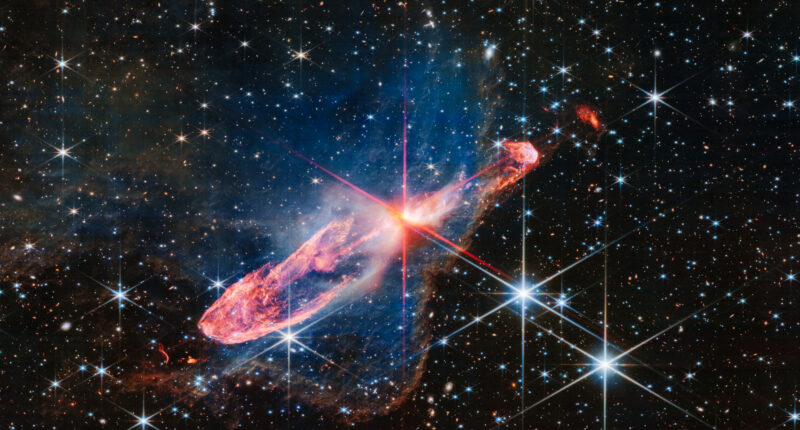SPACE watchers have spotted a surprising symbol in the dark expanse of deep space.
Eagle-eyed viewers may be able to spot the familiar shape in a stunning image captured by Nasa’s James Webb Space Telescope.
If you look very closely, you’ll be able to see a “cosmic” question mark.
It’s tiny in relation to the whole image, so only the keenest eyes will find it.
If you’re struggling, look at the bottom of the Nasa snap, just to the right of centre.
You’ll be able to see a glowing question mark, ablaze in a fiery orange, as first revealed by Space.com.
The question mark revealed
“It is probably a distant galaxy, or potentially interacting galaxies (their interactions may have caused the distorted question mark-shape),” said the Space Telescope Science Institute, speaking to Space.com
The scientists added that it may be the “first time” we’ve seen this object.
Nasa revealed the image at the end of July, showcasing a stunning deep-space scene.
The main part of the image shows the “antics” of a pair of young stars that are actively forming, according to Nasa.
Most read in News Tech
They’re known as Herbig-Haro 46/47, and can be found at the centre of the pink and red “diffraction spikes” in the middle of the image.
“The stars are within the orange-white splotch,” Nasa explained.
“They are buried deeply in a disk of gas and dust that feeds their growth as they continue to gain mass.
“The disk is not visible, but its shadow can be seen in the two dark, conical regions surrounding the central stars.”
The stars in the system will take millions of years to fully form.
This will “clear the scene” of the colourful ejections, with the pair of stars taking centre-stage.
Herbig-Haro 46/47 is located around 1,470 lightyears away inside the Vela Constellation.
It was captured edge on, with one side (the smaller right half) angled slightly closer to Earth.
The JWST launched in 2021, and orbits around a position in space known as the Sun-Earth Lagrange point.
It’s around 930,000 miles beyond Earth’s orbit around the Sun.
The telescope can see far into deep space, and technically even back in time.


That’s because the light from the most distant objects it can view have been travelling for billions of years.
It allows the JWST to see back in time to the very early universe.












